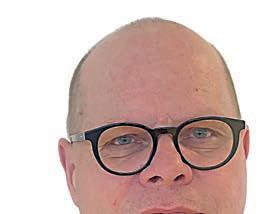
3 minute read
From waste water to drinking water
from PoultryNL
Turning waste water into drinking water
’Water is our most precious resource’
Advertisement
The world is drying out and there is a worldwide shortage of water. ‘We are seeing water scarcity increase. Worldwide, only 6-8 percent of the earth’s surface is fresh water. We have to be careful of that. We purify waste water and turn it into drinking water’, says Emiel Koster of Nijhuis Saur Industries. ‘Water is an interesting fi eld with many challenges’, he says passionately.
I‘In conversations with poultry slaughter houses, I explain the extent of their pollution to show the importance of water purifi cation. The degree of pollution is a technical explanation, but that is something the slaughterhouse people understand’, Emiel explains. Before water can be discharged into the surface water, water purifi cation is necessary. Each person produces about 60 grams of biochemical oxygen demand (BOD) per day. BOD is a measure of pollution. A slaughterhouse can easily process 20,000 broilers per hour for 16 hours a day. This results in 20,000 x 16 hours x 10 litres per broiler = 3200 m³ of waste water every day. This waste water contains about 2.2 grams of BOD per litre, totalling 7,040 kg of BOD per day. This is the same as a city of 117,300 people. ‘When you present these overwhelming pollution fi gures to technical directors and owners of poultry processing plants, it opens their eyes and they have an idea of what it means if they don’t treat their waste water. That’s usually how projects start.’
Expansion thanks to waste water treatment
Nijhuis Saur Industries builds plants with fi lter systems, chemical and biological processes. ‘I visit many companies. We create suitable solutions everywhere. That is the challenge. For example, a slaughterhouse in Poland wanted to expand. That was not possible, because there was not enough water available. The customer had a choice between relocating, opening a second site, and treating and reusing waste water. We built an installation that turns waste water into certifi ed drinking water in a number of steps. The slaughterhouse uses it for its process. A sustainable solution.’ Each step in the purifi cation process produces waste such
Total treatment and biogasplant Poland.
’Water is our most precious resource’
as sludge and concentrates. ‘A fermentation process can be used to generate biogas. This can be used for hot water production, for example, while the remaining solid fraction can be used as fertiliser and the thin fraction goes back to the water purifi cation. In this way, we close the cycle sustainably.’
Engineering
Emiel Koster has seen many technological developments. ‘It’s wonderful how we as a sector are constantly coming up with new innovations to purify water even better and faster. These developments continue. Climate change is having a huge impact in some areas. We are working on solutions.’
Awareness
‘Over the 30 years that I have been creating water solutions, I have seen the mentality change. From the discharge of untreated waste water to far-reaching technological solutions. Water is a resource for the entire business process in the poultry slaughterhouse. Reuse has a value. This also has to do with the changing consumer demand for more sustainable and transparent production. I expect that consumers will eventually be willing to pay for it.’
We close the water loop
EMIEL KOSTER
Water is indispensable
Koster sees major diff erences worldwide, but also many similarities. ‘Diff erent legislation creates diff erent preconditions. The common factor is that water is indispensable. As human beings, we consist of 80 per cent water. If you have a water shortage, you have a big problem.’ Saving water can be very simple. ‘In slaughterhouses, you often see that the grid is removed from the drains and then the spraying starts. Start by sweeping up the coarse dirt and collect the solid dirt fi rst before cleaning with water. We also guide customers in these basics; what is not in the water, does not need to be taken out. The more people see the value of water, the more they are willing to pay attention to it. And it’s not just my and your water, it’s also the water for your children and grandchildren.’













